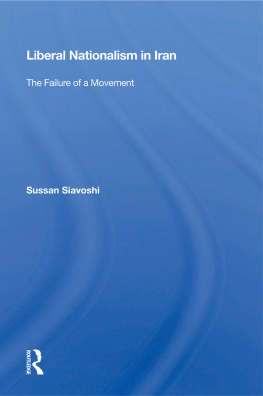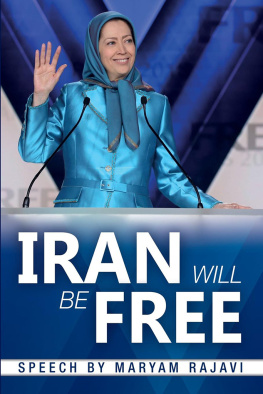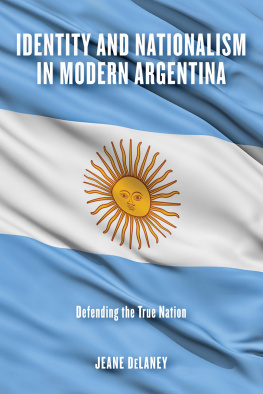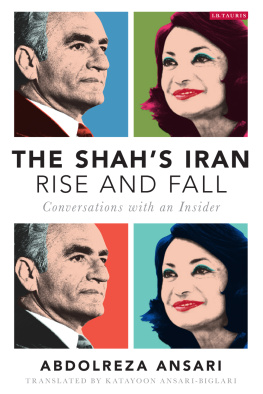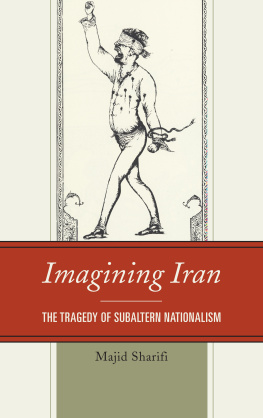Liberal Nationalism in Iran
Liberal Nationalism in Iran
The Failure of a Movement
Sussan Siavoshi
First published 1990 by Westview Press
Published 2018 by Routledge
52 Vanderbilt Avenue, New York, NY 10017
2 Park Square, Milton Park, Abingdon, Oxon OX14 4RN
Routledge is an imprint of the Taylor & Francis Group, an informa business
Copyright 1990 by Taylor & Francis
All rights reserved. No part of this book may be reprinted or reproduced or utilised in any form or by any electronic, mechanical, or other means, now known or hereafter invented, including photocopying and recording, or in any information storage or retrieval system, without permission in writing from the publishers.
Notice:
Product or corporate names may be trademarks or registered trademarks, and are used only for identification and explanation without intent to infringe.
Library of Congress Cataloging-in-Publication Data
Siavoshi, Sussan.
Liberal nationalism in Iran.
(Westview special studies on the Middle East)
Bibliography: p.
Includes index.
1. IranPolitics and government1941-1979.
2. NationalismIran. I. Title. II. Series.
DS318.S52 1990 955'.053 87-10665
ISBN 13: 978-0-367-01396-7 (hbk)
FOR MY PARENTS
Many people have helped me with this book. First, I would like to express my deep appreciation to my interviewees, particularly Karim Lahidji, Homa Katouzian, Amir Pishdad and Hedayatollah Matin-Daftari. Their cooperation was indeed invaluable.
I would also like to thank the staff of the Mid-Eastern Collection at Austin, especially Mr. Abazar Sepehri for his assistance in locating documentary sources. The stylistic suggestions by Alan Titche, my copy editor, have been most helpful.
My colleagues in the political science department at Trinity University provided me with moral support, and I am thankful to them. My special thanks go to Susie DuBose, who for hours on end assisted me with typing and formatting the manuscript.
My most heartfelt thanks, however, go to two scholars, Ahmad Ashraf and Richard Cottam. Professor Ashraf provided me with valuable sources, documents, and insights. He gave the manuscript the thorough attention few manuscripts receive. His encouragement in my moments of self-doubt and panic will not be forgotten. Professor Cottam furnished me with a model of scholarship. Our many hours of discussion were both intense and inspiring and were the true genesis of this book.
Sussan Siavoshi
The 1979 Iranian Revolution and its aftermath took the world by surprise, not only with respect to the intensity and rapidity of events but also to the leadership that emerged. Perhaps most of the Western intellectual community expected either a Marxist or a liberal nationalist leadership or, at least, a greater share of power for those groups during and after the revolution. But as events since the revolution have demonstrated, the supporters of the tenets of Marxism and liberalism did not acquire more and (in the case of the liberals) actually lost the formal influence they seemed to enjoy in 1979. The liberal nationalists proved to be weak, for their last National Front was an elite liberal organization without mass support. Relatively isolated and powerless, it quickly disappeared in the shadow of the forceful and effective religious leadership. The purpose of this study is to examine the rise and fall of the liberal nationalist movement in the second half of the twentieth century.
The Nature of Iranian Liberal Nationalism
The origin of the Melli movement (liberal nationalist movement) can be traced to the Constitutional Revolution of 1905-1911. Since then, the Melli movement has been defined by two overriding and interrelated goals: to destroy internal despotism and to establish an independent country. By definition, the movement was, from the very beginning, anti-despotic and anti-imperialist.
The use of the concepts of liberalism and nationalism in referring to the Melliun (the adherents to the Melli idea) has been criticized by the Melliun themselves. In their view, labeling the Melli movement as "liberal nationalist" distorts its nature and intentions. This objection is understandable in light of the confusion over the variety of competing definitions for liberalism and nationalism. For that reason, it is necessary to clarify these two concepts by providing specific definitions in the context of this study, which in turn will enable us to grasp the relevant meaning of liberal nationalism in the historical context of the sociopolitical realities of Iran.
In twentieth-century Western Europe, particularly during the interwar period, a particular brand of nationalism-symbolized by the rise of Hitler in Germany and Mussolini in Italy-became dominant. The main value and behavioral components of this phenomenon were racial supremacy and a belligerent foreign policy. In both Germany and Italy, dictatorial regimes were set up in order to realize the goals of the "nationalists."
The values of this brand of nationalism were certainly different from the nationalistic values held by many Third-World intellectuals, including the Iranian liberal nationalists. Third-World nationalism in general, and that of Iran in particular, was predominantly associated with a liberation ideology whose main goal was to lift the yoke of colonialism and imperialism and to create truly independent nation-states. As such, Iran's Melliun were characterized by their desire (value) and efforts (behavior) for an independent nation-state. It is only in this sense that one can label the Melliun as nationalists.
Usage of the concept of liberalism is often no less confusing than that of the concept of nationalism. Is one referring to classical economic liberalism or to political liberalism? To an Anglo-American notion of liberalism, to a continental European description of liberalism, or to certain other notions of liberalism?
This confusion is relatively new. In the eighteenth century, liberalism was a coherent ideology containing complementary political and economic components. It was a consistent doctrine of individual liberty: the political theories of James Mill dovetailed with Adam Smith's notion of economic laissez-faire.
This consistency was a product of the socioeconomic and political characteristics of the eighteenth century and most of the nineteenth century in Western Europe. It can be argued that the advent of liberalism was the result of the struggle of the ultimately victorious bourgeoisie against the landed aristocracy and the absolutist state. It was a struggle waged both on economic grounds (to free individuals from the rigid economic status based on a feudal social order) and on political grounds (to free individuals from the absolutist rule of the state).
But the dynamics of history brought about changes that ultimately created a crack in this consistency and necessitated a reevaluation of the concept of liberalism in the late nineteenth and early twentieth century. Laissez-faire, the classical economic liberalism, became a conservative ideology that functioned as a legitimating factor in preserving the status of a privileged class-the bourgeoisie. In essence it became undemocratic, contradicting the philosophical notion of individual freedom and equality for all humanity. The economic inequality resulting from laissez-faire practices, with its implications for political equality, forced political liberals to distance themselves from the advocates of laissez-faire. The result was a new concept of liberalism that sanctioned a certain degree of government involvement in economic affairs (in the form of social legislation) to promote individual freedom. This change in the meaning and character of liberalism manifested itself most clearly in the ideology of those in Western Europe who are referred to as social democrats.


